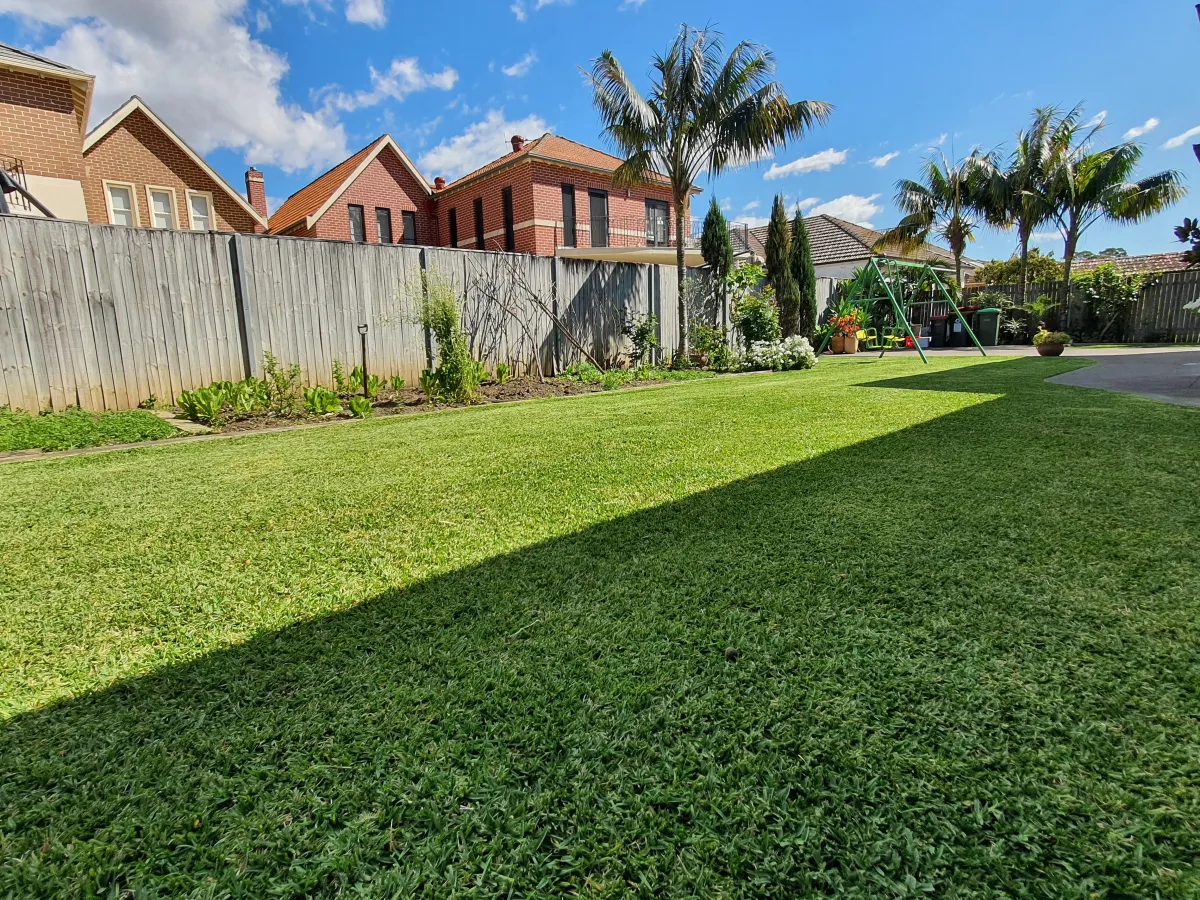
Want a Lawn Like This? It Only Took 2 Weeks! 😱 Let’s Show You How We Did It.
In this blog, we’re going to walk you through the steps we took to get this stunning lawn makeover. Whether you’re dealing with patchy grass, poor soil, or just want to boost your lawn's appearance, these tips will guide you to success. Ready to transform your lawn? Let’s dive in!
Step 1: Diagnose the Problem
Before diving into any lawn care routine, it's essential to understand what’s causing your lawn’s issues. Are you dealing with brown patches? Are certain areas of your lawn completely bare? Identifying the root cause is crucial to determine the best way to revive your grass.
Common Lawn Problems:
Brown patches: Can be caused by overwatering, underwatering, or disease.
Thin grass: Often a result of soil compaction or nutrient deficiencies.
Weeds: A common issue if the lawn isn’t well-maintained or fertilized.
Understanding the problem allows you to focus your efforts and choose the right products for your lawn.
Step 2: Proper Lawn Care Starts with Soil Preparation
A healthy lawn starts with healthy soil. If your soil is compacted or nutrient-deficient, your grass won’t thrive. Before applying any fertilizers or treatments, we recommend starting with soil testing.
Why Test Your Soil?
pH Balance: Lawns prefer a slightly acidic to neutral pH (between 6.0 and 7.0). Soil that's too acidic or too alkaline can hinder nutrient uptake.
Nutrient Levels: Soil tests will tell you exactly what nutrients your lawn is lacking, so you can choose the right lawn fertilizer.
Lawn Tip: You can get a soil testing kit from a garden center, or send a sample to a local lab for a more in-depth analysis.
Step 3: Aerate Your Lawn for Better Root Growth
If your soil is compacted (which often happens in high-traffic areas), it’s essential to aerate. Lawn aeration involves creating small holes in the soil to allow air, water, and nutrients to penetrate the root zone. This promotes healthier roots, allowing your lawn to absorb nutrients more effectively.
How to Aerate Your Lawn:
When to aerate: The best time to aerate is in the fall or early spring when your grass is actively growing.
Tools: Use a core aerator (available for rent or through professional services) to remove small plugs of soil. This creates the necessary holes for water and fertilizer to penetrate deeper.
Aerating helps break up compacted soil, giving your lawn room to grow strong roots. It’s a game-changer in lawn care, especially if you're dealing with patchy or sparse grass.
Step 4: Overseeding for a Fuller, Greener Lawn
Overseeding is the process of planting new grass seed directly onto an existing lawn. This helps fill in bare spots and improve the overall thickness of your lawn.
Why Overseed Your Lawn?
Fills in bare spots: If you have patches where the grass is thin or gone, overseeding helps fill them in.
Improves lawn density: Evenly distributed grass seed helps make your lawn thicker, preventing weeds from taking over.
Better resistance: A thicker lawn is better at resisting diseases, pests, and environmental stress.
Lawn Tip: Overseed right after aerating for maximum effectiveness. This ensures the grass seeds have good contact with the soil and can germinate quickly.
Step 5: Watering Wisely
Watering is one of the most important aspects of lawn care, but it’s also one of the most misunderstood. Overwatering or underwatering can both harm your lawn.
How Much Water Does Your Lawn Need?
Water deeply: Water your lawn deeply but infrequently to encourage deep root growth. Aim for about 1 to 1.5 inches of water per week, including rainfall.
Best time to water: Early morning (before 10 AM) is the best time to water. This allows the grass to absorb the water before the sun evaporates it, and it helps reduce the risk of fungal diseases.
Pro Tip: Avoid watering at night, as this can promote mold and mildew growth.
Step 6: The Power of Lawn Fertilizer
One of the biggest keys to transforming your lawn in just two weeks is the proper use of lawn fertilizer. Fertilizer provides essential nutrients that grass needs to grow strong, green, and healthy. If your lawn is lacking in nutrients, it's almost impossible to get a lush, vibrant yard.
Choosing the Right Fertilizer
Look for a balanced fertilizer that contains:
Nitrogen (N): Helps grass grow strong and green.
Phosphorus (P): Promotes strong root development.
Potassium (K): Increases resistance to diseases, pests, and drought.
Types of Fertilizers:
Slow-release fertilizers: These release nutrients gradually over time, providing steady nourishment to your lawn.
Quick-release fertilizers: These give your lawn a rapid boost but may need to be applied more frequently.
Lawn Tip: Apply fertilizer in early spring and again in late fall to keep your lawn nourished throughout the year.
Step 7: Weed Control to Keep Your Lawn Healthy
Weeds can quickly take over a lawn, especially when it’s stressed or weak. A thick, healthy lawn naturally crowds out weeds, but if your lawn isn’t there yet, you may need to take extra steps.
Preventing Weeds
Pre-emergent herbicide: Apply this in early spring to stop weed seeds from germinating.
Post-emergent herbicide: If weeds have already sprouted, use a post-emergent herbicide to eliminate them without harming your grass.
Lawn Tip: Be cautious with herbicides, as they can damage your grass if not used correctly. Always read and follow the label directions.
Step 8: Consistent Lawn Maintenance for Long-Term Success
A beautiful lawn doesn’t happen overnight—it requires consistent garden maintenance. Regular mowing, watering, and fertilizing will keep your lawn looking great year-round.
Maintenance Checklist:
Mow regularly: Keep your grass at about 2.5 to 3 inches tall. This helps promote healthy growth and prevents weeds from taking over.
Rake leaves and debris: Fallen leaves can block sunlight and stunt grass growth.
Fertilize regularly: Follow a fertilization schedule to ensure your lawn stays strong and green.


